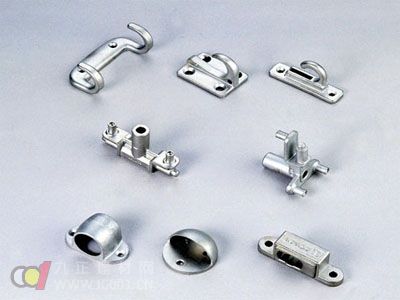Classification of Door and Window Hardware:
First, the hardware accessories of sliding windows include guide rails that are directly formed on the window frame profile for aluminum or plastic windows. The pulley system is fixed at the bottom of the window sash. The smoothness of the sliding motion depends not only on the quality of the pulleys but also on the straightness of the profiles, machining accuracy, and installation precision. Dust accumulation on the rails and pulleys can affect the functionality of the sliding mechanism. Sliding window locks are typically latch-type locks, which may fail due to low installation precision or dust buildup. The handle is often integrated with the latch, while some high-end models use an arched profile as a handle.

Second, casement window hardware primarily includes hinges. Hinges are installed in the opening direction—inside for inward-opening windows and outside for outward-opening ones. To avoid affecting the seal, metal window hinges are usually welded externally. Outer window locks are typically rotating card locks, often combined with handles. Internal window locks may be simple plugs. A disadvantage of latches is the lack of compression function found in rotating locks. Handles on internal windows are independent and do not connect to other components. External windows often use stoppers to prevent wind from slamming the sash. These stoppers are commonly made of copper to resist rust.
Third, inward tilting window hardware includes top scissor connectors, corner joints, locks, handles, connecting rods, multi-point locks, and bottom shafts. This system allows for ventilation and cleaning. The design of these windows ensures comfort and ease of maintenance. Connecting rods can be fixed using double links or pre-designed grooves, with the latter offering better durability.
Fourth, glass curtain wall hardware involves complex systems that ensure airtightness and structural integrity. Advanced systems allow for inward-tilting windows within curtain walls, but this requires high technology and cost. Four-bar linkages replace traditional hinges, hiding them inside the frame. However, they cause a slight drop in the sash’s center of gravity when open, which can affect operation. Multi-point locks improve wind resistance by using multiple locking points, enhancing security and performance.
Fifth, flip window hardware features two rotating shafts and associated locks. Achieving good sealing is more expensive compared to other types. Some advanced systems allow 360-degree rotation for better sealing and easier cleaning.
Sixth, window openers come in manual and electric versions. Manual openers help ventilate high-positioned windows, using components like actuators, connectors, and handles. Electric openers use motors and switches, with options like rack-and-pinion or chain mechanisms. They must be sealed against dust, moisture, and water. Environmental conditions significantly influence the choice of opener. Automatic systems control windows based on temperature, humidity, and weather, while smoke exhaust systems open windows during fires to release heat and smoke.
Many homeowners prefer Pull Down Kitchen Faucets because they allow for greater control. The variety of spouts and spraying patterns can prove useful when washing dishes. It`s an ergonomic solution that takes fewer movements to use. There`s a limited twisting of hose, which may extend its longevity. Installed in a deep kitchen sink, it`s one of the best choices anyone can make.
Pull Down Kitchen Faucets,Pull Down Kitchen Tap,Pull Down Faucet For Kitchen,Single Hole Pull Down Kitchen Faucet
Kaiping Jenor Sanitary Ware Co., Ltd , https://www.jenorsanitary.com